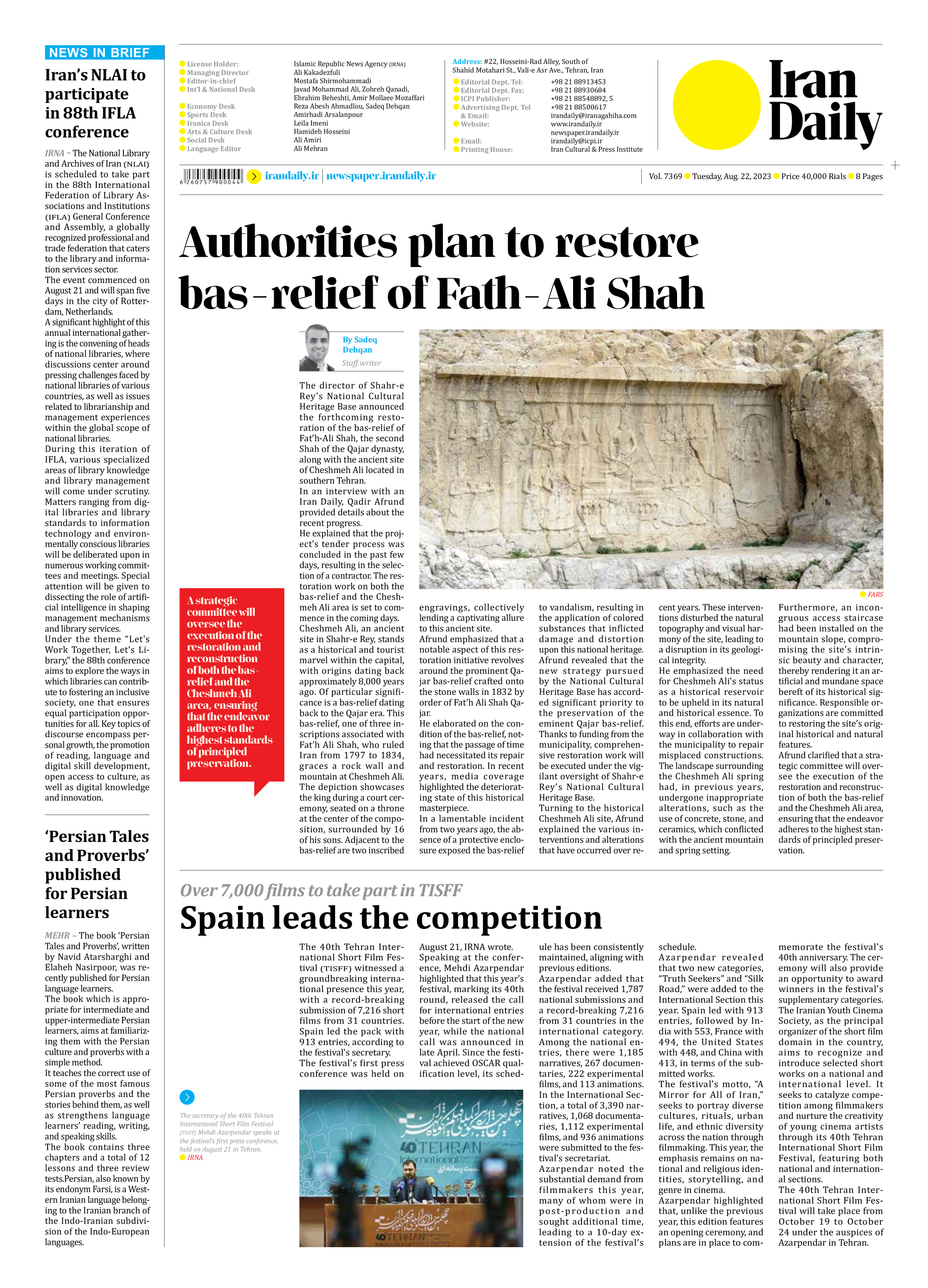
Authorities plan to restore bas-relief of Fath-Ali Shah
By Sadeq Dehqan
Staff writer
The director of Shahr-e Rey’s National Cultural Heritage Base announced the forthcoming restoration of the bas-relief of Fat’h-Ali Shah, the second Shah of the Qajar dynasty, along with the ancient site of Cheshmeh Ali located in southern Tehran.
In an interview with an Iran Daily, Qadir Afrund provided details about the recent progress.
He explained that the project’s tender process was concluded in the past few days, resulting in the selection of a contractor. The restoration work on both the bas-relief and the Cheshmeh Ali area is set to commence in the coming days.
Cheshmeh Ali, an ancient site in Shahr-e Rey, stands as a historical and tourist marvel within the capital, with origins dating back approximately 8,000 years ago. Of particular significance is a bas-relief dating back to the Qajar era. This bas-relief, one of three inscriptions associated with Fat’h Ali Shah, who ruled Iran from 1797 to 1834, graces a rock wall and mountain at Cheshmeh Ali. The depiction showcases the king during a court ceremony, seated on a throne at the center of the composition, surrounded by 16 of his sons. Adjacent to the bas-relief are two inscribed engravings, collectively lending a captivating allure to this ancient site.
Afrund emphasized that a notable aspect of this restoration initiative revolves around the prominent Qajar bas-relief crafted onto the stone walls in 1832 by order of Fat’h Ali Shah Qajar.
He elaborated on the condition of the bas-relief, noting that the passage of time had necessitated its repair and restoration. In recent years, media coverage highlighted the deteriorating state of this historical masterpiece.
In a lamentable incident from two years ago, the absence of a protective enclosure exposed the bas-relief to vandalism, resulting in the application of colored substances that inflicted damage and distortion upon this national heritage.
Afrund revealed that the new strategy pursued by the National Cultural Heritage Base has accorded significant priority to the preservation of the eminent Qajar bas-relief. Thanks to funding from the municipality, comprehensive restoration work will be executed under the vigilant oversight of Shahr-e Rey’s National Cultural Heritage Base.
Turning to the historical Cheshmeh Ali site, Afrund explained the various interventions and alterations that have occurred over recent years. These interventions disturbed the natural topography and visual harmony of the site, leading to a disruption in its geological integrity.
He emphasized the need for Cheshmeh Ali’s status as a historical reservoir to be upheld in its natural and historical essence. To this end, efforts are underway in collaboration with the municipality to repair misplaced constructions. The landscape surrounding the Cheshmeh Ali spring had, in previous years, undergone inappropriate alterations, such as the use of concrete, stone, and ceramics, which conflicted with the ancient mountain and spring setting.
Furthermore, an incongruous access staircase had been installed on the mountain slope, compromising the site’s intrinsic beauty and character, thereby rendering it an artificial and mundane space bereft of its historical significance. Responsible organizations are committed to restoring the site’s original historical and natural features.
Afrund clarified that a strategic committee will oversee the execution of the restoration and reconstruction of both the bas-relief and the Cheshmeh Ali area, ensuring that the endeavor adheres to the highest standards of principled preservation.







